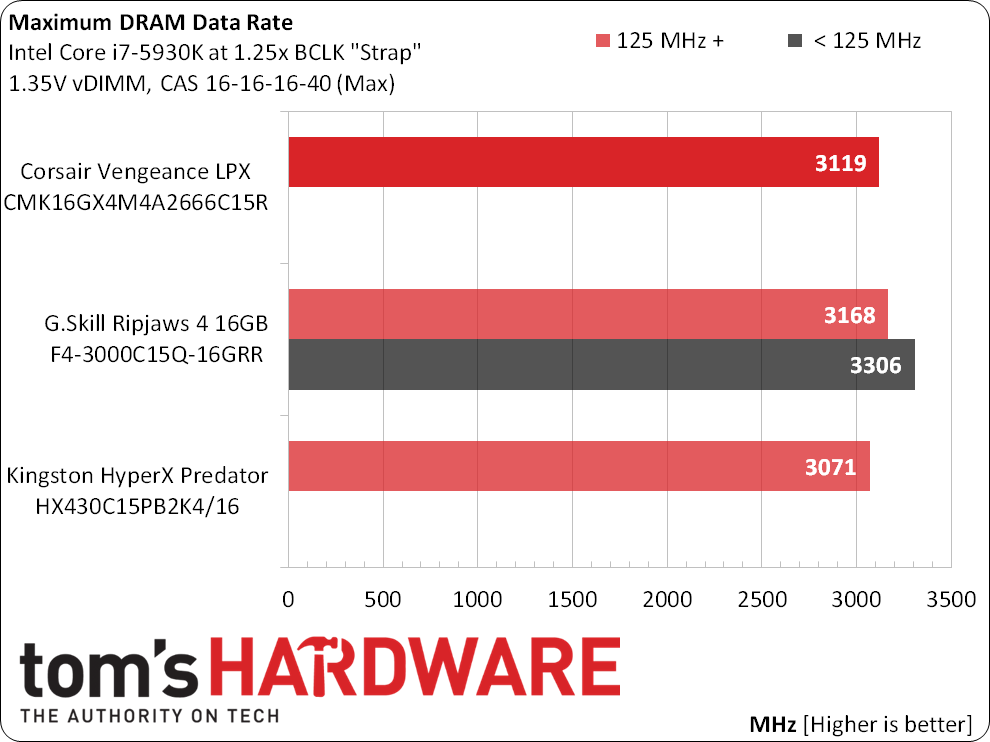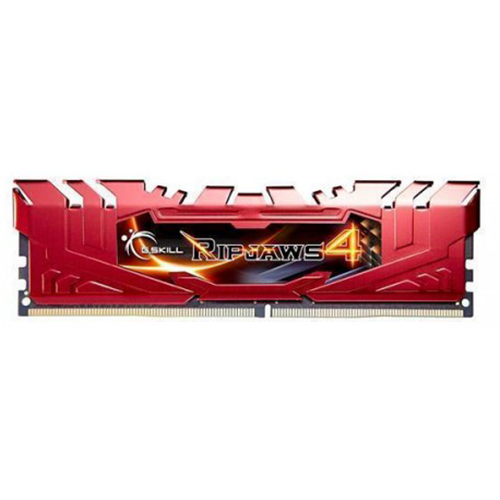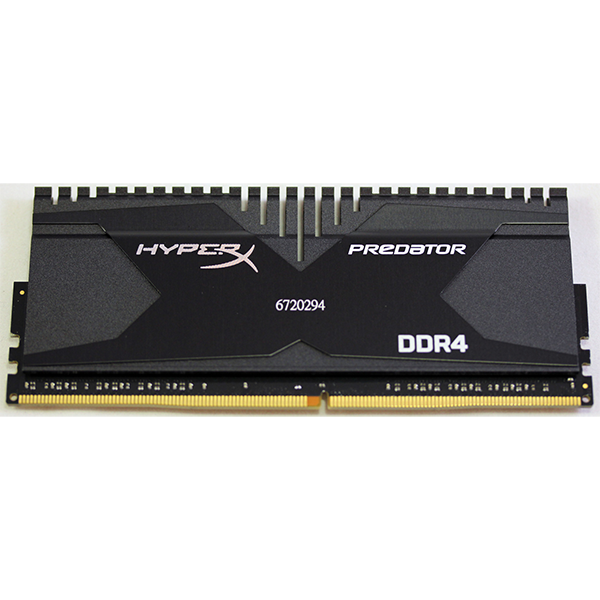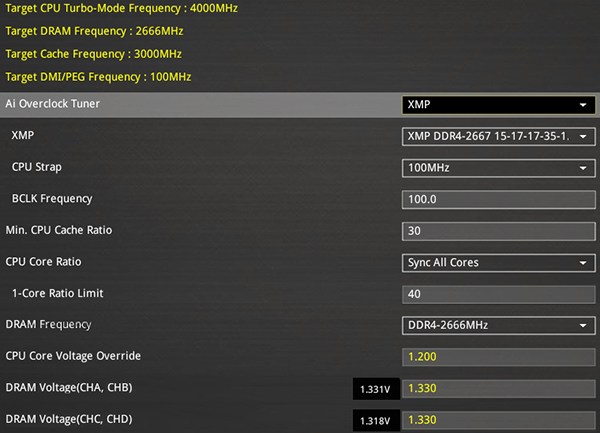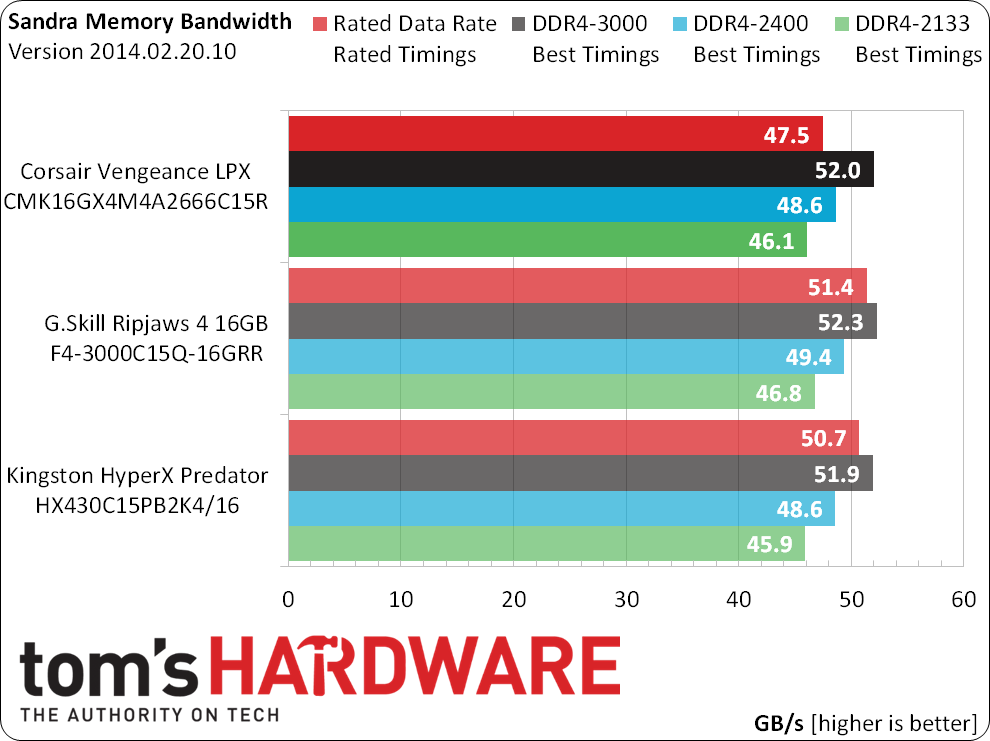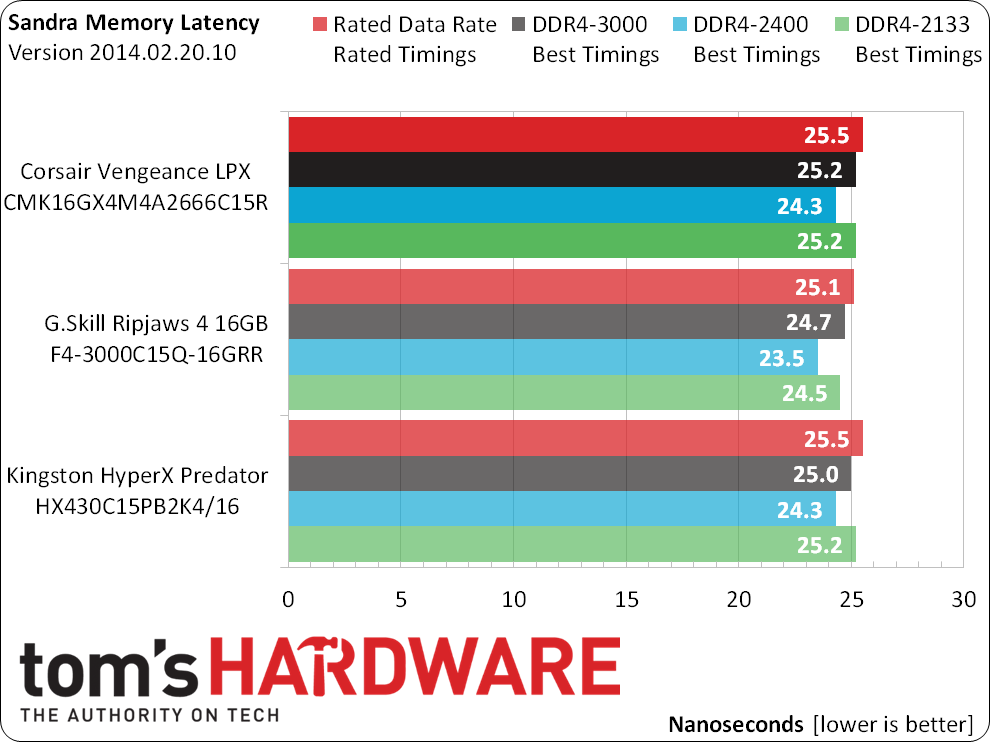Corsair Vengeance LPX DDR4-2666 Review
Why you can trust Tom's Hardware
Overclocking, Tuning, Bandwidth And Latency
This CPU doesn’t work beyond a 132MHz base clock, so stepping past DDR4-3168 (132 x 24) requires me to increase the DRAM ratio and “underclock” the 100 x 1.25x BCLK. Because the Vengeance LPX wouldn't reach DDR4-3168, that step wasn’t necessary.
That’s not to say the Vengeance LPX DDR4-2666 is a bad overclocker though; its maximum-stable DDR4-3119 easily beats the DDR4-3071 of Kingston’s DDR4-3000.
Best Stable Timings
Corsair Vengeance LPX DDR4-2666 also edges out the best timings of Kingston’s DDR4-3000. That should help it in a few benchmarks, though there are secondary and tertiary timings left to “automatic” mode that could have some effect.
Reconfiguring DDR4-2666 from this motherboard’s 21.33 x 125MHz custom overclock to a more broadly-compatible 26.66 x 100MHz required several adjustments, which, through the magic of Photoshop, are combined in a single screen shot.
Dropping the BCLK ratio (CPU Strap) from 1.25x to 1.00x (125 to 100MHz) automatically causes the actual BCLK setting to fall to its stock 100MHz. Though the motherboard automatically lowered the CPU cache ratio to 24x when setting the 1.25x strap, it did not automatically restore its 30x default when forced back to the 1.00x strap. After resetting CPU Cache to 30x, I changed the CPU multiplier from 32 (32 x 125 = 4000) to 40 (40 x 100 = 4000). Since the motherboard’s 21.33 x 125MHz data rate (DDR4-2666) was now at 2133MT/s, I also had to manually set the memory to 2666MT/s.
In spite of motherboard readings, my voltmeter shows that the board’s 1.330V setting produces an actual 1.35V to 1.36V.
Seen in the Vengeance LPX “Rated Data Rate” value, its DDR4-2666 bandwidth suffers slightly from loose 15-17-17-35 timings. Capable of far better, its manually-optimized DDR4-2400 timings match Kingston’s in both setting and bandwidth.
Get Tom's Hardware's best news and in-depth reviews, straight to your inbox.
Loose timings likewise hurt Corsair’s rated DDR4-2666 settings in Sandra's latency measurement, though manually-optimized timings are again roughly tied with Kingston's DDR4-3000. Remember, lower is better for latency.
Current page: Overclocking, Tuning, Bandwidth And Latency
Prev Page Is There Such Thing As A Value-Oriented, Overclockable DDR4 Kit? Next Page Real World Benchmarks, Value And Recommendations-
blackmagnum I have to ask: Do these aluminum clip-on heat spreaders help with lowering the temperature or they just like huge spoilers on Honda Civics (I look fast)?Reply -
COMONGUISE I have to ask - When will Tom's show a comparison with DDR3? I know its on a different chipset, but we would really like to know.Reply -
SuperVeloce @tom10167: Well yeah, 1600 ram is enough for 99% home usage scenarios, no matter how much faster a DDR4 can be. But now you can already get 2666 cl15 ram (latency something like ddr3 1600mhz cl7, cl8), and if that's at 1,2V, even better. First ddr3 ram sticks for first amd ddr3 chipsets and core2 intels were terrible and with high voltage for faster models (I even saw 1,7V+). So in a way this time around latency drops faster and it's not even available yet in mainstream platforms...Reply -
Crashman Reply
Different processors make an inaccurate comparison, but you can compare two articles if you like. In fact we used the same benchmarks so that you could.15173990 said:I have to ask - When will Tom's show a comparison with DDR3? I know its on a different chipset, but we would really like to know.
On the other hand, comparing two articles to prove that DDR4 currently performs slightly worse than DDR3 is a futile task. Anyone who buys LGA 2011-v3 does so for its added PCIe lane OR added CPU cores. They have no choice other than DDR4.
Right, go ahead and pair DDR3 with your Core i7-5930k. Tell us how it goes. Thanks.15174259 said:They won't do that because then nobody would buy any DDR4 ram -
codo everything on my machine is blitzing as it should be but just cause I know this exists I want it.Reply -
CaedenV ReplyI have to ask: Do these aluminum clip-on heat spreaders help with lowering the temperature or they just like huge spoilers on Honda Civics (I look fast)?
To say that it did not help at all would be a lie... but it is mostly for looks.
I have to ask - When will Tom's show a comparison with DDR3? I know its on a different chipset, but we would really like to know.
When Skylake comes out we should see the first chips that can support DDR3 and DDR4 so we can see some true head-to-head comparisons. I suspect that DDR4 is (at least at the moment) no better than DDR3 in performance and only has an advantage in a performance per watt perspective. But like Crashman said: The first DDR3 modules (and controllers) were horrible and no better than DDR2 at the time. At least DDR4 is improving faster, and dropping in price sooner, than DDR3 did.
-
DDR4 is a bad joke right now. Kits are expensive, slow and low capacity. Where are the 16GB sticks? Timings of 15-15-15-35-2T?Reply
